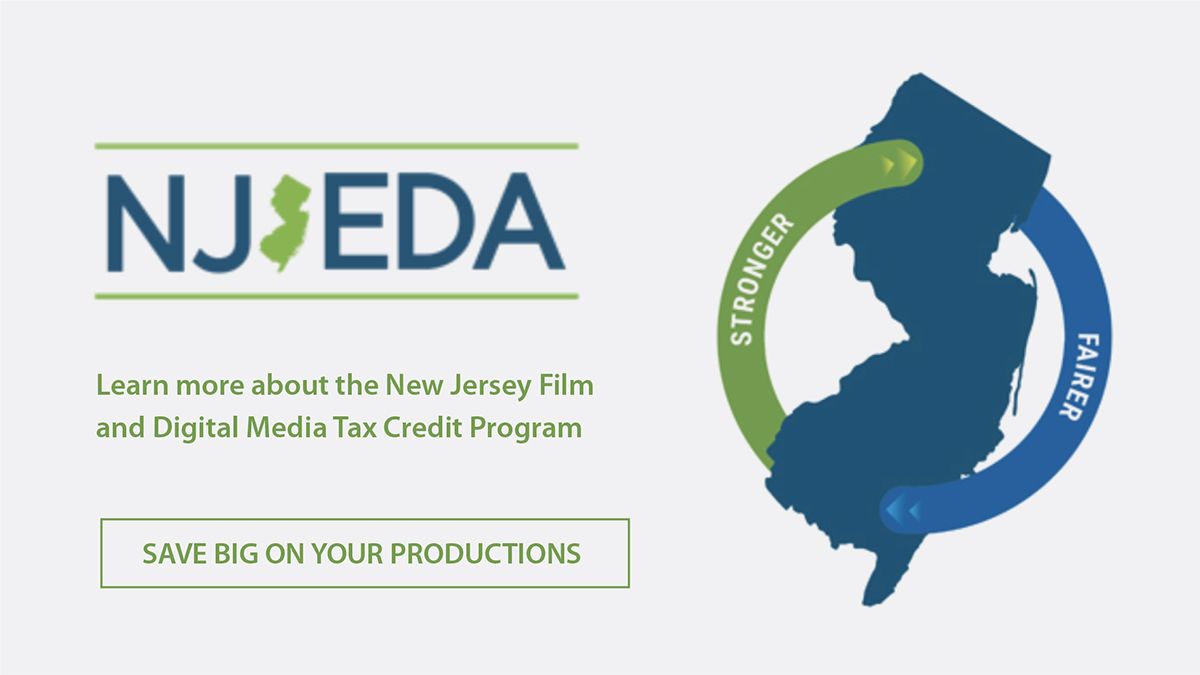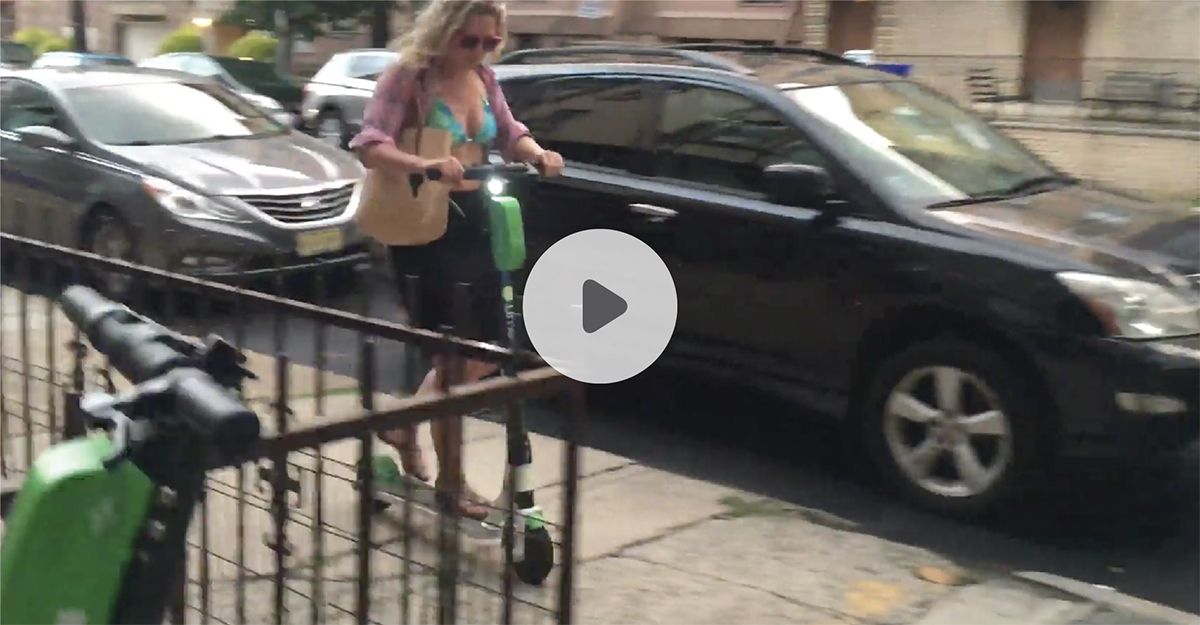Shoot at Cobalt and Save 30% Per Production with the NJ Tax Credit
Shoot at Cobalt and Save 30% Per Production
Now, in effect for the fiscal year of 2019, New Jersey’s Film & TV Tax incentives include credits of $75 million per fiscal year for film and television projects. The bill also incentivizes companies to make significant efforts to hire diverse cast and crews with a 2% diversity credit for employing at least 15 percent women and minorities. And to top it all off, when you “set up your entity” here at Cobalt, you can shoot on location anywhere and still take advantage of the tax credit.
NJ Tax Credit News
Last week, we spoke with Steven Gorelick, Executive Director of New Jersey's Motion Picture and Television Commission. We discussed NJ’s Film and TV Tax Credit- and our shared mission to meet the needs of the Tri-State Area production community. This past summer, NJ’s Economic Development Authority awarded the first tax credits of the new program—$6.2 million... divided among four projects.
NEW JERSEY OUTCOMPETES NEW YORK ON TAX INCENTIVES
We consulted with Industry analysts, who confirmed that New Jersey’s Film & TV Tax Credit is more competitive than similar incentives in New York State. The NJ incentives include 30 percent of ABOVE AND BELOW the line for all qualifying production expenses. New York’s tax credit only pertains to below the line expenses :(
It's a Great Time to Lock in These Savings
To learn more about the incentives, you can check out these FAQs and read the legislation in its entirety here. Download this PDF that New Jersey's Motion Picture and Television Commission Executive Director Stephen Gorelick sent us to share with you.
Experience The Tri State’s Premiere Soundstage.
Cobalt’s state-of-the-art 12,000 sq. ft. soundstage facility delivers a true turnkey production experience.
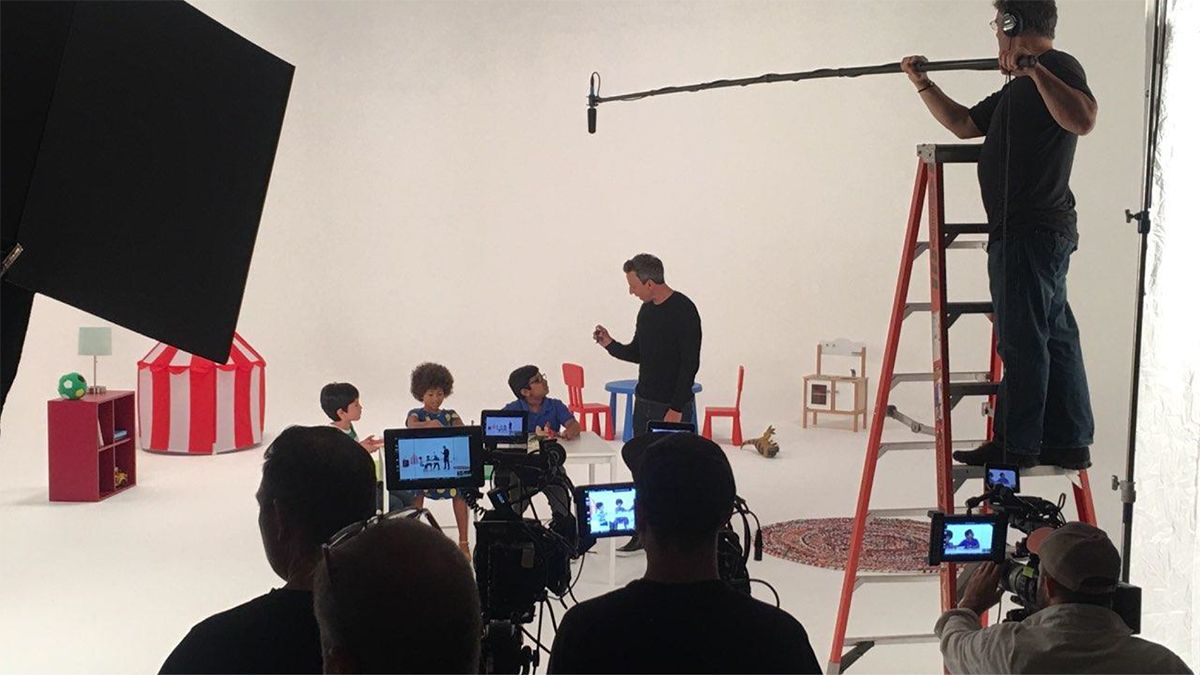
A recent shoot with Seth Meyers.
World Class Soundstage
Production professionals throughout the tri-state region enjoy convenient access to our world-class 12,000 sq. ft. production studio, featuring a 7,000 sq. ft. soundstage, 20 ft. ceilings and cutting edge onsite equipment. Clients place Cobalt on par with NYC’s top soundstages, often preferring Cobalt because of our pristine, comfortable, and well-equipped environments. Leveraging Cobalt in a turnkey capacity saves productions considerable time and money upfront. When unforeseen needs arise, our clients save thousands of dollars more in crew time by accessing last-minute lighting, rigging and tech equipment from Cobalt’s comprehensive in-house inventory.
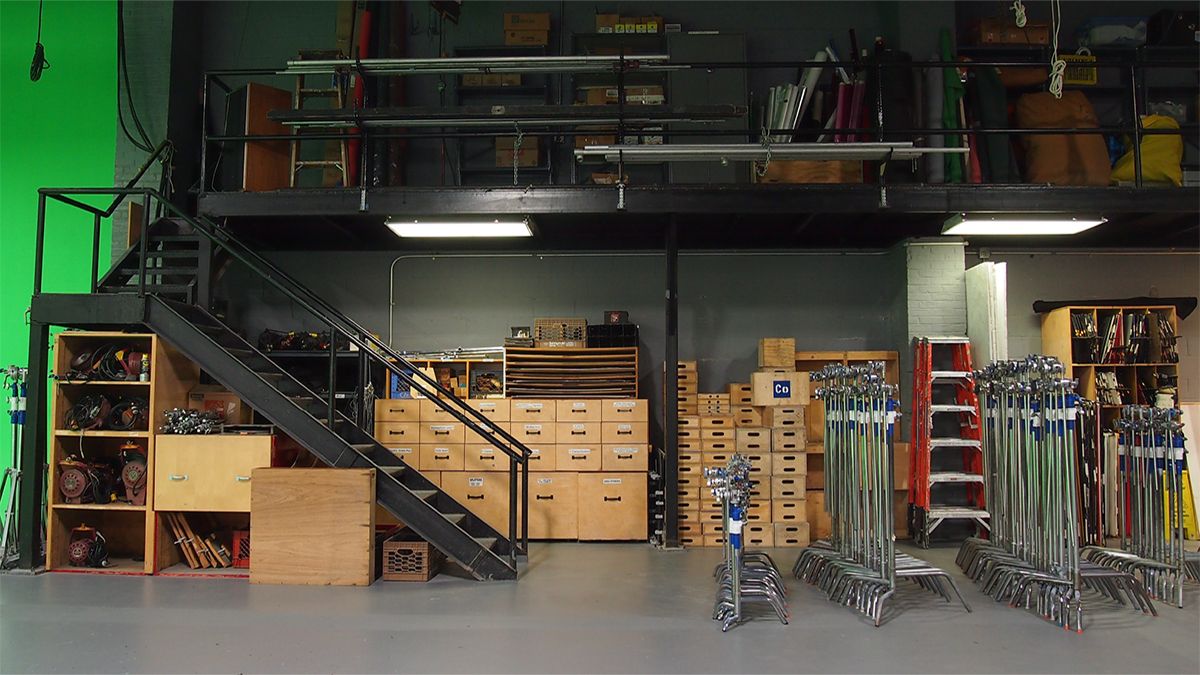
Cobalt offers a full suite of in-house equipment.
The Swiss Army Knife of Studios
Cobalt’s comprehensive in-house equipment and amenities are hand-selected by seasoned professionals who understand precisely what’s needed to deliver the optimal production experience. We offer lighting, rigging, high-end lenses, precision robotics, and the East Coast’s only publicly-available Virtual Backlot for working with Virtual Sets. Additionally, we provide an extra layer of hospitality with comfortable, furnished spaces for producers, talent, and hosting VIP talent.

Hobo House is our 2000 sq. ft. on-location production facility. Great for crews & long-span shooting space. Natural light to die for.
Our Newest Location: The Hoboken House
Cobalt Stages spans two locations in the heart of Hoboken. Each located one minute, thirty seconds apart by Lime Scooter! “Hobo House” (as we like to call it) is a fully-appointed, sun-drenched 2000 square foot Carriage House with three bedrooms and three full bathrooms—perfect for wardrobe, hair, and makeup. Shoot in our modern, Euro-style chef’s kitchen. Make our secure breezeway your own private shipping & receiving area. Set up a food tent or talent holding in our private patio/garden. The possibilities are endless. Schedule a tour of “Hollywood on the Hudson”, today.
Why I Made Friends with Robots. (Watch the VIDEO!)
https://www.youtube.com/watch?v=lQqLT7wDp3E
We know that Motion Control can be intimidating, but it doesn’t have to be! Today’s MoCo technology is easier than ever to master. Let me show you how MoCo makes precision moves manageable, so getting the shot can be fast, cost-effective and maybe even 'good times'.
Read on to learn how to make the most of Motion Control.
MoCo is About the Mindset
As a Cinematographer, DP, and Effects Supervisor, I’ve come to rely on non-linear problem solving to arrive at the simplest and most cost-effective solutions. Start with the shot you want to create, then ‘zoom out,’ breaking it down into smaller, more manageable components. Next, envision how they all fit together. When you ‘zoom out’ this way, it’s easier to see all the facets of a single shot, and you open the door to ‘eureka moments’. For example, what looks like a complex camera-moving problem can often be reimagined, and you’ll discover that it’s simpler to move the object, instead.
Get the Story Behind the Shot
Getting the backstory helps you process the ‘how’ and ‘why’ behind great Motion Control executions. That’s always more valuable than just knowing ‘what’ was done. One side-by-side, time-lapse product shot demanded a novel solution... It started with two hand models smearing deodorant sticks on a sheet of sandpaper. Then came the 2-3 hours of time-lapse to show off the product’s performance. Because of the time-lapse, we wouldn’t know if we had a good take for hours. We also had to repeat this demo with several competitors’ products. We were severely crunched for time, but MoCo came to the rescue! We build 3 sandpaper cubes, then wrote a simple Motion Control move to turn the cubes from facet to facet. This way, we were able to shoot 12 takes at a time instead of one. In record time, our delighted client got about 50 takes to choose from! Now, any time you run into a similar problem, you'll have a sense of how MoCo can help solve it.
Find a Right-Sized Solution
When you ‘zoom out’ and see the big picture, a shot that looks complex on the surface might be achievable with an absurdly simple solution. One commercial product job required oversized pills to roll out of a shot, revealing the ‘hero product’ in the background. The producer first came to us with an elements list a mile long. He envisioned the pills being actuated by arms from above, but given the production time it would have taken to shoot all the picture and matte passes, this would have been a herculean task. (Not to mention all the rig removal and reflection restoration)... The right-sized Motion Control solution was inexpensive and far from complicated. We put the pills on tiny sleds with a magnet, then ran a magnetic rig under the table to move them. Our magnetic rigging was invisible, the effect was in-camera, and the solution created ZERO post-production ramifications. Again, great success!
Don’t Be Afraid to ‘Retro-Tech’
So, as you can see, being clever and inventive is infinitely more important than just having the latest gadget! I’ll tell you one more story about seeing things differently. On another shoot, we had a challenging water shot to pull off. We needed a high-speed macro shot of a pebble falling into the water, making a crown-shaped splash, but without seeing the stone. In linear thinking, one might say we have to hide the pebble somehow. By breaking it down and seeing all the angles, I was able to devise a simple solution. We cut a hole in the bottom of a shallow tank, stretched some latex across the gap, and connected a motion-controlled motor to push and pull the center of the latex creating a beautiful ‘crown effect’ without the pebble.
Lastly, Get Good Advice
I can’t imagine any aspect of cinema requiring a more ‘consultative’ approach than Motion Control. When you hire a motion control company, you should be getting some solid advice as to how best to achieve the desired shot. Work with a supplier who spends some quality time with you discussing the nuances of the shoot, planning out the schedule, resource allocation, and system redundancies. This sort of service and support helps your production to contain costs and deliver uncompromised creative work.
The Takeaway
Motion Control is a unique blend of analytical problem-solving and out-of-the-box creativity. Get your mind around big shots by breaking them down into smaller components; tailor the solution to the problem; and seek out the best advice you can get. You’ll be amazed at how this ‘Big Picture’ approach can help make your MoCo projects manageable, and even fun!
How Motion Control delivers limitless creative opportunities.
Motion control, or MoCo, gives you the flexibility to move the camera in three-dimensional space with complete precision and repeatability. Today, MoCo is the backbone for almost every VFX scene that’s shot, and it doesn’t add complexity. On the contrary, even the easiest shots can be streamlined with MoCo.
Read on to learn why MoCo is such an invaluable tool for unleashing creativity and enhancing productivity:
Eliminating Camera Operator Struggle
There are two reasons that seemingly simple shots are often the trickiest to execute - precision and repeatability. A shot that starts out, head-on, and ends directly overhead sounds astoundingly simple to operate, but trying to execute that without robotics can be a real drain on resources. When you factor in challenges like coordinating a boom, dolly and tilt, holding critical focus on shallow focus long-lens macro shots, is nearly impossible. Trial by error is no way to spend your on-set time, so those “in the know” rely on the precision and repeatability of robotics.
Programming is Easier than Ever
Key framing and editing are now quick and easy to do! Moves can be imported from Maya 3D animation software. They can also be “live encoded”, then tweaked, so you have robotic control over organic action. For example, the dolly grip can operate the dolly and boom, while the camera operator operates the pan tilt head, and the A.C. is pulling focus—all LIVE! Then, that take can be edited and precisely played back. You can even choose which axis of motion is being played back, robotically, and which axes are “live encoding”. This blend of control and flexibility creates infinite new opportunities for unbound creativity that would be impossible without robotic technology.
Tricky Rigging Situations Made Simple
As seen in the Game of Thrones finale, a recent trend in cinematography across all genres is shooting at higher and higher frame rates for a slowed-motion effect. Each time you double the frame rate, you’ll need to halve the timing of any rig (including the motion of the camera). So, if you’re executing a 3 second shot, but shooting at 800 frames per second, your rig timing now has to occur at the right time within a 1/10th of a second shot. The old “ready-set-go” will never accomplish this level of precision, but MoCo makes it easy.
“Selling” a “Twins” Effect
Because audiences are seeing amazing visual effects everywhere, the bar for VFX keeps getting higher and higher. Say you needed to shoot a single actor playing twins, like Mark Ruffalo in HBO’s forthcoming series, “I Know This Much is True.” Certainly, a locked-off camera simplifies the challenge, but would the effect be convincing enough for today’s sophisticated viewers? What if you wanted the scene to feel organic, as opposed to “telegraphing” the effect? The solution is clear. You’d start shooting with a moving camera! MoCo can add a sense of realism to the shot, by using a rig that enables the two characters (played by one actor) to relate to each other on screen. For example, one twin could carry a pile of books, while the other grabs a few off the stack. How is this possible, with just one actor? You’d use a motion-controlled sled to carry the stack of books while the “twins" are just going along for the ride. This way, you can ensure that the books appear in the identical position for each pass. Here’s a great example of this kind of effect.
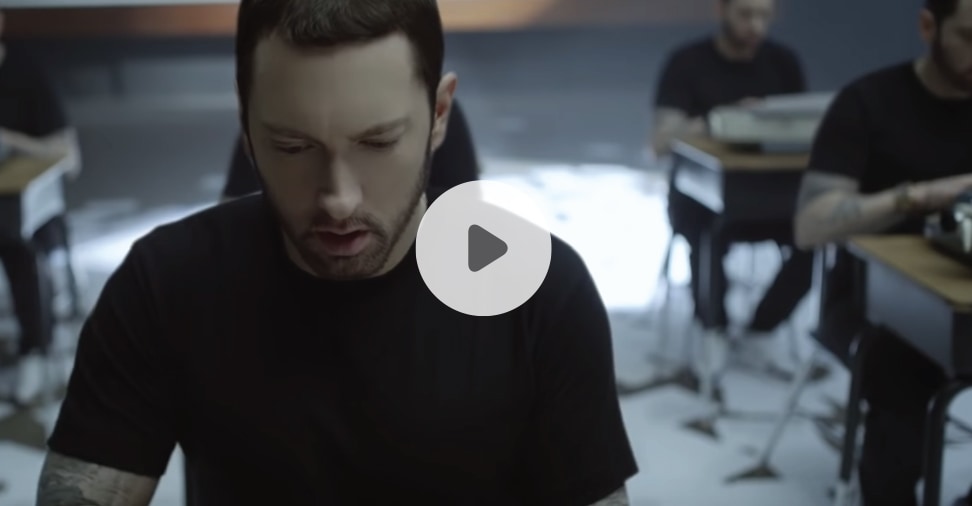
The Takeaway
Motion Control is a versatile, user-friendly, problem solver for all manners of creative challenges. It can be as simple as a giant repeatable turntable to spin a car or turn a set, as delicate as a rig configured to spin and tumble a diamond, or as massive as a camera crane. The possibilities are endless... And that’s the magic of MoCo.
How 'Morning Kickoff' makes your team more efficient.
Nobody likes sitting through a meeting when an email would suffice. That said, holding a daily "Morning Kickoff" meeting is a key time (and money) saver on any shoot. It gives you a chance to go over the day’s work, and to align everyone with your Vision. But there’s more to it than that.
Here’s why we believe that a daily Morning Kickoff practice is essential to any production:
There’s something for everyone.
In the hospital, teams of doctors get together at the start of each shift to collaborate on patient care. Morning Kickoff serves the same purpose on your production. When experts from all disciplines come together, they coordinate tasks, determine priorities, establish daily goals, and plan for potential problems. Sometimes specialists have never even been in the same room with each other before, so giving them a chance to communicate, helps everyone hit the ground running.
It’s Critical for Collaboration.
In an interdependent workplace like a production set, Morning Kickoff is a major opportunity that empowers everyone to fine-tune workflows, update plans based on current conditions and maximize the efficient use of time and resources—all of which will impact your bottom line. Taking 15 minutes at the start—or even 45 on the first day of a complex shoot—will save you hours at the backend by allowing departments to work and problem-solve, simultaneously, instead of sequentially.
Power to the People.
Our experience has been that people want to impress and do their best. Morning Kickoff is the ideal venue for sparking up everyone’s creative and strategic thinking for the day. Empowered with information, every department can chime in with suggestions and contributions—while they are still actionable! When they hear the updated plan, your Grips might suggest getting a scissor lift instead of ladders which might save a couple of hours of crew time. Then the Gaffer says, “If we do that, then we can also send back some equipment.” Morning Kickoff gives everyone the chance to optimize and coordinate, together, for everyone’s benefit.
The Takeaway.
Don’t skip Morning Kickoff! It’s a valuable forum where ideas are exchanged quickly to boost collaboration, accountability and efficiency across every department. It can be a game changer.
Crew on scooters, how cool is that?
My project manager Chloe and I have been zipping around Hoboken on e-scooters since they launched, and they’re the bomb ???? (It only takes 1 minute and 30 seconds to get from Cobalt’s soundstage to our “HOBO HOUSE” location by Lime scooter!) Since the city launched its first e-scooter program, 300 vehicles are available — powered by Lime Scooters and OjO Electric by PG3M.
This is how we roll, and here are 7 reasons why you should too:
There’s something for everyone.
Here at “Hollywood on the Hudson,” there are two brands to choose from. My personal favorite is the Lime Scooter which offers a razor scooter-like experience where you stand up. If you prefer a more Vespa-like, seated ride, take an OjO Electric Scooter.
They’re on-demand.
In the era of Lyft and Uber, nobody likes to wait long for a ride. Hoboken’s e-scooters are on-demand, so you can just grab and go. The Lime scooters are dockless, so you can leave them anywhere, which is awesome.
They simplify commuting.
The Lackawanna Terminal is where the Hoboken Ferry, NJ Transit and PATH train terminals adjoin. There, you’ll find an assortment of e-scooters that are perfect for zipping over to our soundstage and Hobo House locations.
They’re fast, but not too fast.
Maxing out at 20 miles per hour, Hoboken’s e-scooters are fast enough to save lots of time, but not fast enough to be a menace. We use them daily, and they’ve been a great way to pack more productivity—and pleasure—into the workday! Just don’t hit a pothole lol.
They’re clean and green.
Riding an e-scooter is an eco-friendly alternative to taking a car. Steve Jobs even predicted that e-scooters would make a bigger impact than personal computers, and that modern cities would be redesigned around them. Right again, Steve!
They’re cheap and chic.
There’s a reason Sophia Loren was photographed on a Vespa so many times—scooters are classic, accessible glam! Hop on an e-scooter and have your iconic “Audrey Hepburn in Roman Holiday” moment (minus the shaky steering, of course).
They’re fun.
Picture this: You take the ferry in from NYC, hop on an e-scooter and roll into work at Cobalt... You spend the day doing excellent work in a comfortable space where you’re proud to host important clients. When your PA’s run out for a last minute ‘whatever,’ they hop on an e-scooter and get back in 10 minutes flat—with a big smile on their face! Sound like fun???
The Takeaway
Hoboken’s small town vibe is greatly enhanced by access to e-scooters. They’re everything we love—fast, flexible, green and fun! Swing by and see for yourself, we’d love to see ya ????
How a turnkey soundstage saves you time and money.
How do you want to spend your time—being creative? or managing minutia..? With an 'empty warehouse' soundstage, you can spend your precious time sourcing lights, lenses and folding chairs. A better alternative is working with a turnkey soundstage.
Here’s why leveraging your soundstage’s onsite offering helps you stay under budget, and spend more time on what matters most:
Save time and money TWICE.
Using a turnkey soundstage protects your production against wasted time and money, upfront, by sparing you some of the sourcing. Then, you save AGAIN, onset, by being 'preventative'... At a turnkey stage, you are aligning yourself with vendors who have already thought through & prepared for last-minute emergencies that can occur. Even better, in a spur of the moment rigging pinch, it helps if a studio has rigging components available. Having these last minute capabilities, keeps you from needing to put your production on pause. What happens if someone has a creative idea in the middle of lighting design?? It really helps if you can just 'grab something' from the in-house inventory.
Start from scratch? Really?
More tools and amenities, onsite, also means a lot less to worry about. If you’re shooting food, don’t construct a kitchen. Find a soundstage that has one! If you’re making a film, shoot where there’s more of what you need, long-term. How about ample production space, office supplies and generous internet bandwidth, to start? If you’re building a practical set, don’t rent another entire space to do it. Find a place with a woodshop. If you’re building your set, virtually, find a place that has VSet ready to go. And if you’re working with celebrity models or actors, see what amenities are offered for talent. Comfortable chairs, robes, and slippers really DO make a difference.
Use more, pay less.
We saved the easiest for last! The simplest way to save on below-the-line expenses is by working with a turnkey studio, and taking advantage of economies of scale. In addition to comparing what tools and amenities are offered, in-house, ask what kind of package deals each soundstage has to offer. You can save exponentially on time and money by negotiating a volume discount.
The Takeaway
It's simple. Your soundstage’s onsite resources shouldn’t be an afterthought. When you factor in the time and labor of sourcing, transport and last-minute surprises, it almost always makes sense to work with a one-stop shop that offers more of what you need.
How prioritizing previsualization saves you time and money.
Almost every producer has gotten feedback like, “We built this beautiful set, but I don’t see any of it!” It happens, and it’s usually because of unclear communication in the planning stages :/
Prioritizing Previz PAYS, and it can even be painless! Here’s why we advise spending lavish attention on the previsualization process—photography, storyboards, animatics, and the like:
Why is Previz so important?
Previz provides structure. Previz gives collaborators a necessary framework where everyone can see what’s planned and respond accordingly. Proper Previz doesn’t preclude “happy accidents”, but it does, however, ensure that resources be used strategically. This way, creativity can flow through every phase of production—not just onset, when pressure is high, and time is limited.
Previz is approachable.
Don’t be intimidated! Previsualization can be easy-to-learn, affordable, and as low- or high-tech as you like! You can do a photomatic or animatic of the concept. Choose the application that matches your needs keeping in mind the time you can devote to mastering it. More complex concepts with many moving parts require more robust functionality, so start by identifying the variables in the shoot that need to be worked out.
Get the right help.
Leverage people, tools and training to make the Previz process as productive and painless as possible. Start by picking the Previz method that gives you the best value. You’ve probably heard of SketchUp, and you can find training, trainers and forums on their website to help you get started. There are other programs, too. Each has its own set of features and commensurate learning curve. Take a look at Previz, Moviestorm, FrameForge and Storyboarder, and see which meets your needs. Then, you can either take a DIY approach, or if you don’t have the right tools and experience, find someone who does.
The Takeaway
To make the most of resources, time and budget, Previz is your best friend. Elevate every project you work on by getting familiar with your Previz options; by getting firsthand experience using them; or by cultivating relationships with people who can help. (And be sure to check out our video, up top, which goes into more detail about SketchUp!)
How venues and vendors can make or break your production.
You cultivate relationships with talented, reliable people who add value to your team—but have you thought about the role that venues and vendors play? Relationships that are peripheral to your production also influence productivity, creativity and the overall culture onset.
Ask yourself 3 Quick Questions to see if a potential venue or vendor is worth working with:
Do they really understand your project?
Unless you’ve walked a mile in a producer’s shoes, it’s hard to appreciate the everyday challenges of running a production. For example, if you’re talking to a soundstage manager who doesn’t have a clue about budget line items (or the importance of giving VIP clients more than folding chairs in front of a folding table...)—it’s wise to see if you can do better.
Do they really care about your project?
You care deeply about the quality and success of your production, and it IS possible to find supportive, sincere helpers. We keep a running list of committed gaffers, grips, technicians, artists and others—but it’s not just about who’s local and competent. We prioritize by working with people we can count on to be reliable, resourceful and just plain cool to work with.
Are they “culture killers?”
Good attitudes and bad ones have one thing in common: they’re both contagious. When something unforeseen happens during production—and it always does—positive people pitch in and make it right. Others follow suit. You can’t control everything, but the simplest way you can elevate your production across the board is by protecting the vibe onset.
The Takeaway
Create an environment where excellence and cooperation can thrive. The mood matters! (Mood spells doom backwards when we don't get it right.) Toss out any bad apples before they spoil your production, and cultivate relationships with service providers and suppliers who care.
7 Ways to Bring Your Film / TV Project in Under Budget
If you’re a producer, then you know how challenging it is to create excellent work without going over budget. Before you compromise on a creative concept in order to control costs, it pays to investigate some out-of-the-box strategies for elevating your project without breaking the bank.
Read on to learn our Top 7 Cost-Containment Strategies for bringing your production project in under budget.
1. Prioritize Previz
“Happy accidents” have their place in every production, but paying extraordinary attention to planning will always save you money in the end. The previsualization process includes photography, storyboards, animatics and shot lists. The more complex the execution, the more powerful the solution you’ll need. Fortunately, there are user-friendly tools and methodologies for making the Previz process as painless as possible—and some of them even have short learning curves. When your plan has a lot of moving parts, you might want to use a strip board—a low-tech, and rock-solid method that’s stood the test of time. If the project requires camera complexity, consider getting good at a program like SketchUp or working with someone who is.
2. Hold Out for Helpful People
Our Industry is the same as any other—some people are in it to serve you, some are in it to gouge you. In production, everyone is under pressure, and if a venue or vendor makes an already-stressful process feel unnecessarily adversarial, go with your gut. If your initial conversations feel more hostile than helpful, it’s not going to get better when you’re locked into a contract. Work with cooperative, sincere people who value long-term relationships, and when problems arise, they won’t let you down.
3. Use Stations on Stage to Save Crew Time
Crew hours are expensive. To maximize efficiency and come in under budget, don’t work sequentially—work simultaneously. We advise setting up multiple stations so lighting/rigging crews, grips, electricians, set carpenters, prop people and your art department can stay busy (instead of taking turns). If you’re locked into one set-up, you can’t chip away at your close-ups, which might require rigging or high speed lighting. Instead, consider building a few smaller ”setlets”, each considering the unique needs of the shots. This way, your crew can be working while you’re shooting the “main set”. You may have to invest extra in props, product or lighting, but by setting up stations, you can significantly save in crew costs.
4. Don’t Skip the Morning Kickoff
We can see why meetings get a bad rap. Everyone hates sitting through a meeting when an email would suffice. That said, holding a daily morning kickoff meeting is a key time (and money saver) on any shoot. On the surface, it gives you a chance to go over the day’s work, and to align everyone with your Vision. But there’s more to it than that. Morning Kickoff helps every department to understand their impact on each other’s work. In an interdependent workplace like a production set, this is a major opportunity that empowers everyone to fine-tune workflows, update plans based on current conditions, and maximize the efficient use of time and resources—all of which will impact your bottom line.
5. Consider Owning Production Tools
Here’s an easy trick for cutting production costs. First, review a year’s body of work, and look at your equipment rental costs. Then, if you keep renting the same things over and over, see if it makes sense to buy them. Some production tools require heavy maintenance, and some technologies evolve so quickly that investing in them doesn’t pay off. But, if you’re seeing cheap, durable tools you can buy and keep, you can save significant money on rental cost—plus the time and cost of equipment sourcing, tracking and transport.
6. Find a Turnkey Studio
In a similar vein to owning your own tools, you can also save a lot by sourcing a soundstage that can provide a chunk of your production needs. Sourcing and transporting every last table, chair and cooler a la carte is more than tedious—it’s labor intensive, time consuming and expensive, too. Economies of scale can save you a lot, when you work with a studio that can package a substantial amount of their onsite resources into your deal. And, we’ve never seen a single production that hasn’t needed some random thing at the last minute. A turnkey soundstage is likely to have what we call “emergency expendables” like tape or plexiglass—things that can hold up your production when you’re working in an empty warehouse environment.
7. Shoot on the Outskirts
If you are smart enough to consider shooting in Romania (off-shore), why not 20 minutes out of any city? It’s a smart move to consider other nearby options where overhead costs are lower. Consider the total cost savings when you take into account parking, catering and everything else that’s cheaper on the outskirts.

